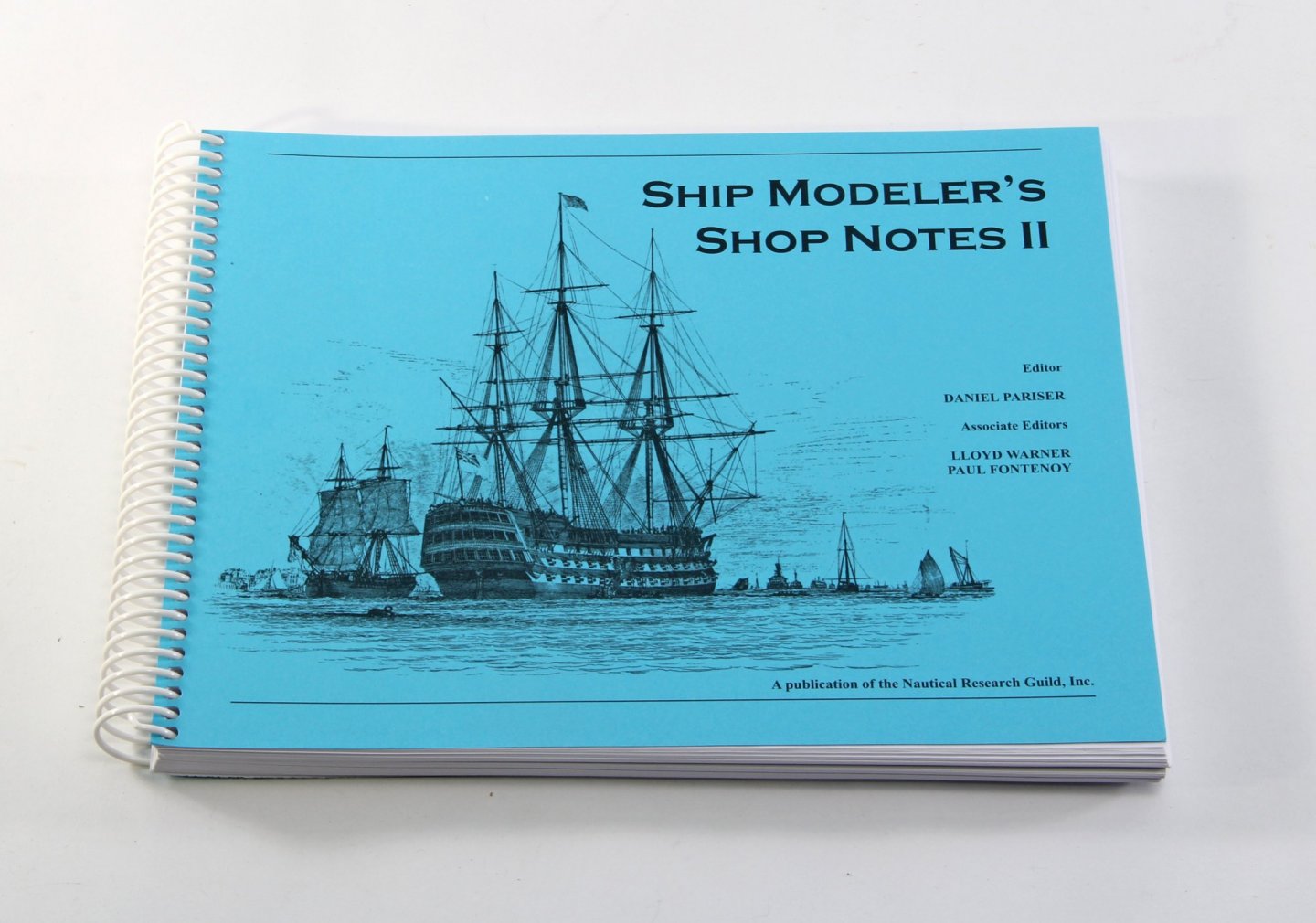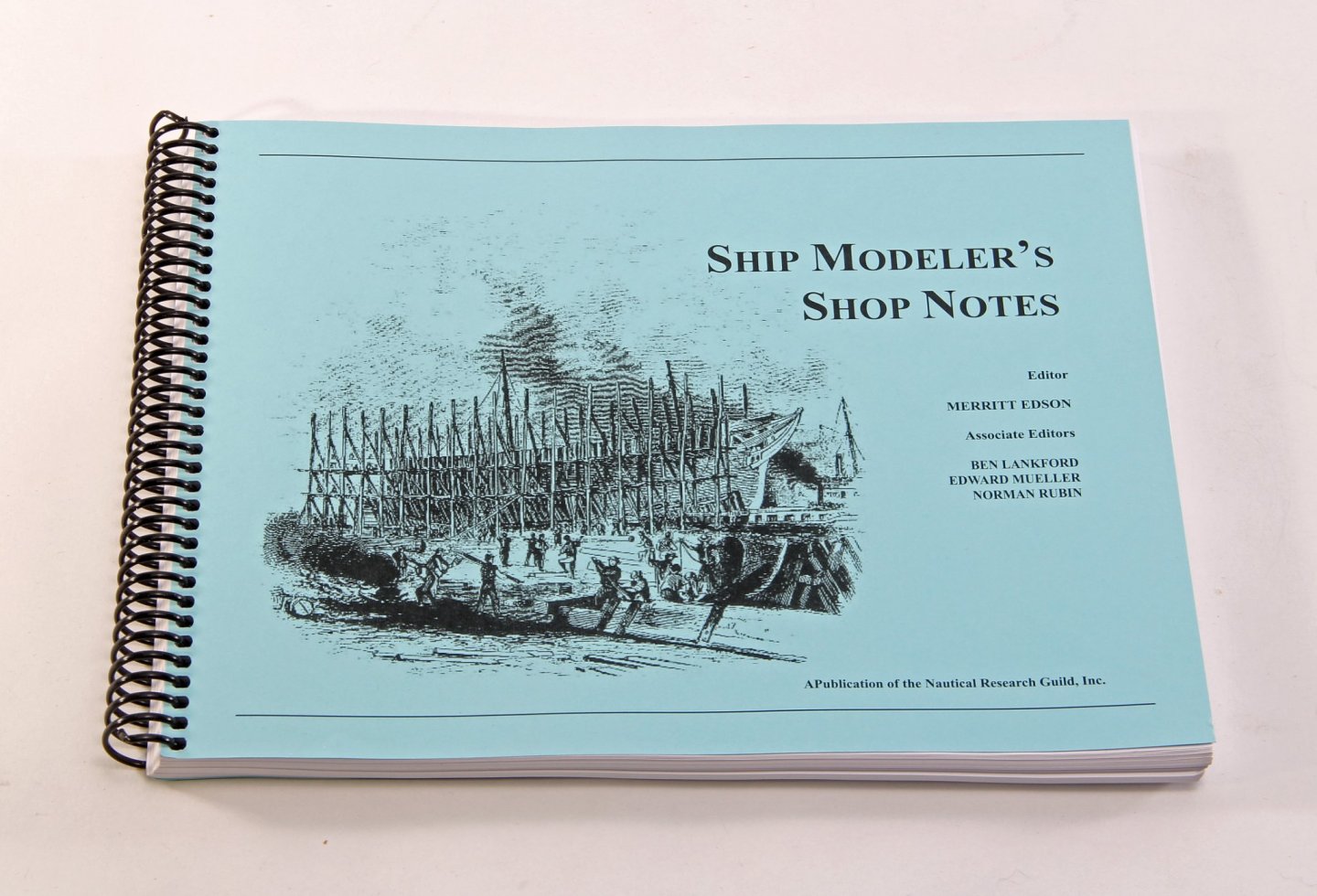-
Posts
3,019 -
Joined
-
Last visited
Content Type
Profiles
Forums
Gallery
Events
Everything posted by kurtvd19
-

New to the community and wooden models
kurtvd19 replied to Harland Wolff's topic in New member Introductions
Welcome to MSW. -

Ships vs Boats
kurtvd19 replied to Mike from Aus's topic in Using the MSW forum - **NO MODELING CONTENT IN THIS SUB-FORUM**
There are no "ships" on the Great Lakes. 1,000 ft ore carriers are still boats. And of course all the submarines that were mfg in Manitowoc, WI were boats. -

2021 NRG CONFERENCE
kurtvd19 replied to kurtvd19's topic in NAUTICAL RESEARCH GUILD - News & Information
In the past we have done this as we have held most conferences within a hotel with banquet and meeting spaces. We will not be doing this when we hold the 2022 Conference there at the Channel Islands Maritime Museum as the entire conference with the exception of the tour will be held at the museum. There are many nearby hotels and we will provide a list for attendees. When the event is not in a hotel we have no bargaining power to get discounted rooms. -
The 44th Annual Midwestern Model Ships and Boats Contest will be a Virtual Contest with models judged by photographs submitted by the modeler. The contest is cosponsored by the NRG and all judges are NRG members who have judged earlier contests at the museum. The rules, judging criteria and registration forms are available for downloading from the museum's website. Entry payment and all photographs and papers must be submitted prior to May 1. There will be a virtual awards ceremony on Saturday, May 15th (time to be announced) and awards will be mailed to the winners after the ceremony. Note on the registration forms the discounted entry fee for members applies to WI Maritime Museum members not NRG members. INFORMATION & DOWNLOAD FORMS https://www.wisconsinmaritime.org/programs-and-events/midwestern-model-ship-contest/
-
All are invited to attend the event below. The Texas Navy Association and the Texas Maritime Museum are holding a live-stream event on April 8, 2021 and have extended the invitation to all MSW members. LONE STAR NAVY: Texas, the Fight for the Gulf of Mexico, and the Shaping of the American West. By Jonathan W. Jordan Join us Thursday evening, April 8, 2021, at 7 p.m. US Central Time for a free online presentation by Jonathan W. Jordan, author of the award-winning book “LONE STAR NAVY: Texas, the Fight for the Gulf of Mexico, and the Shaping of the American West.” Jon will describe the fluid international situation leading up to the campaign, the Battle of Campeche and its startling outcome, and how the battle profoundly altered the fate of Texas, Mexico, and the United States. This program will be live-streamed on Facebook and YouTube, here: https://www.facebook.com/texasnavyassociation/ https://www.youtube.com/channel/UCHkVwERIw7aNamFNgqum3zw For more information about the program, visit the Texas Navy Association here: https://texasnavy.org/Jonathan-Jordan-Webinar Throughout its decade-long existence, the Republic of Texas was never really at peace. Texians struggled to keep the independence they won from a Mexico that refused to admit defeat. A critical part of Texas’ defense was the Republic’s Navy, which often deployed its warships deep into the Gulf of Mexico and the western Caribbean, striking at Mexico City’s commerce and forces, and supporting revolutionary allies in Mexican provinces like Yucatan and Tabasco. The battle to secure Texas independence culminated in May 1843, when two sailing vessels of the Texas Navy, under Commodore Edwin Moore, engaged a Mexican squadron lead by two iron-hulled steamships armed with ultramodern explosive shell-firing guns. The fate of the republic – and the American West -- hung in the balance. . . . This program is sponsored through the generous support of the Texas Maritime Museum in Rockport, Texas. The museum’s mission is to offer a variety of experiences to children and adults by collecting, preserving, and interpreting items of historical interest for educational purposes; to recount Texas maritime history through artifacts, documents, and other materials of unique or historical value; and to exhibit items to further the public interest, knowledge, understanding, and appreciation of such material and related historical background. The Museum’s collections and exhibits are based on four central themes: (1) the history and technology of offshore petroleum production and transportation; (2) the history and development of Texas seaports, maritime communities and maritime commerce along the Gulf of Mexico; (3) the exploration and settlement history of the Texas Gulf Coast beginning with the Spanish and French; and (4) the Texas seafood and fishing industry. For more information about the Texas Maritime Museum, visit: https://www.texasmaritimemuseum.org/
-

Membership expiring? How can I tell?
kurtvd19 replied to Srodbro's topic in NAUTICAL RESEARCH GUILD - News & Information
Also, every Journal has the member's expiration date on the mailing label as well as your member number. The mailing label will say expiring soon with #3 of your 4 per member year and the last of the 4 will have a RENEW NOW - LAST ISSUE notice on the mailing label. -

Rivets?
kurtvd19 replied to Nirvana's topic in Painting, finishing and weathering products and techniques
I used C/A glue on a 1/2" scale tugboat that had regularly spaced welding tracks on the deck to aid traction. They were 6" long on the full size tug. The styrene deck was marked with a light pencil at the proper spacing and the glue was applied with micro tubing to the deck. A quick shot of accelerator was given to the applied glue after about 6 tracks. It replicated the appearance perfectly. I would not do that today with the decals available with simulated weld beads. Same with rivets. -

Rivets?
kurtvd19 replied to Nirvana's topic in Painting, finishing and weathering products and techniques
What kind of model is going to have 1/8" rivets? Tiny drops of C/A approach scale but Titebond can't replicate a scale rivet - as you demonstrated. I must be missing your point. -

Greetings from the shores of Lake Michigan!
kurtvd19 replied to Jayhawk's topic in New member Introductions
Welcome to MSW Jayhawk. You will find your questions can be answered here. Where are you on the shore of the lake? We have three model clubs in the Chicago suburbs. Kurt -
Blacken-It was made by a married couple - very small business. They died in a car accident - or so I read back when it happened - and the company died with them. I imagine the EPA scares off any small business that would dare think of replacing the product. Birchwood Casey Brass Black is my standby. Make sure the metal is clean, dip the pieces in it either dilute or full strength remove and let it drain off. Repeat as necessary and then was it off let the parts air dry and then rub gently with an old T-Shirt. Some black will rub off. If not black enough repeat the process. I was never happy with Blacken-It and had switched to Brass Black when Blacken-It was still being made.
-

Dockyard Carving Tools
kurtvd19 replied to Roger Pellett's topic in Modeling tools and Workshop Equipment
I have some of the old ones. Made in the USA with Cherry handles. The ones I have I got from a shop in Iowa that attended many carving/woodworking shows in norther IL and southern WI. I know it was after Dockyard closed originally but they had them in stock I guess. They had them advertised in their catalog - the entire line. I guess the only way to find out is for somebody to buy some and test them. They were known for high quality steel. I hope the line keeps the good quality. -

Dockyard Carving Tools
kurtvd19 replied to Roger Pellett's topic in Modeling tools and Workshop Equipment
Yes. Is this from a guy in Iowa? -
Eric, your plug for the NRG and MSW was appreciated and you thanked me last week.
- 599 replies
-
- sidewheeler
- arabia
-
(and 4 more)
Tagged with:
-
I too watched Eric's program - for the second time after reviewing it for him last week and It was just as interesting tonight. The Q&A session was very good too. Anybody who missed it should check out You Tube.
- 599 replies
-
- sidewheeler
- arabia
-
(and 4 more)
Tagged with:
-

Rivets?
kurtvd19 replied to Nirvana's topic in Painting, finishing and weathering products and techniques
These are the same as almost all decals. Decals need to be applied over gloss paint if flat paint a gloss coat is required over the flat - apply the decal and then flat over the decal to blend in. Same with wood - the decal will not know the difference. Applying any decal over flat paint will not allow the decal to lie flat - even with a decal setting fluid. It will appear that there is a fog under the decal due to not being able to adhere to the lows in the flat paint. I always over coat the decal with a clear to hide the decal film and blend it all in. -
Just dealing with getting products to the customer is not easy today. Our cost of getting Journals delivered overseas has more than doubled during Covid. And the time it takes with the reduction of flights between the US and overseas is a big factor. We have seen shipments sit at O'Hare airport for 6 weeks waiting for a flight - why we are not using normal mail for Journals now. It routinely prior to Covid took about 90 days to some counties. Some places are taking a lot longer now. It has really complicated business for small places like SeaWatch and the NRG.
-

Rivets?
kurtvd19 replied to Nirvana's topic in Painting, finishing and weathering products and techniques
These are real nice and I have several types. They also have weld seams to apply. All different scales. -

Dying/coloring rope; sources for purchase of quality rope
kurtvd19 replied to Tomculb's topic in Masting, rigging and sails
Coffee is loaded with tannic acid and it will lead to premature failure of fabrics. People have used it to color sails - and I have made a lot of $$ when I did restorations needed to replace sails and rigging dyed with tea. Fabric dyes can work and don't damage the rope/material. -
Go to the the Delta Tool web site and look up your model number. There should be a owners manual, parts list, etc. to see if your scroll saw had had one to start with. I have not seen a brand name saw w/o one. I sure wouldn't use one w/o the feature.
-

Kit Review 1:24 Muscongus Bay Lobster Smack - Model Shipways
kurtvd19 replied to kurtvd19's topic in REVIEWS: Model kits
The rigging line in the kit is better than the typical kit line but I got spoiled with Chuck's rigging line. There is no comparison between Chuck's line to any kit's rigging line. However, if I had known that Chuck was dropping the rope I probably wouldn't have mentioned it. In fact I have now edited out that sentence. -
Below is the entire bit in the original Shop Notes that was initially referenced. Below that is the original published in the Secretaries Newsletter Vol 3 - pg 25. It is an exact copy of the referenced text that I found in the #3 SNL file on the CD. It was a shop note in the SNL - no other related info. Kurt PLANKED DECKS by John J. Flynn (3-2) If one is at all apprehensive about an individually laid planked deck opening up, make allowances for a double deck. The lower planking should be laid at a 45 degree angle to the center of the ship. In the past I used blackened glue to indicate seams between deck planks, but no longer do so. I feel the seams and butts are prominent enough with just a glue line. I put in enough nails to hold each plank until the glue underneath it has dried. The nails are left slightly above the deck surface so they can be easily drawn. Sanding fills these nail holes and is just suggestive enough of actual wooden plugs put over the counter sunk nail holes in a full sized vessel.
About us
Modelshipworld - Advancing Ship Modeling through Research
SSL Secured
Your security is important for us so this Website is SSL-Secured
NRG Mailing Address
Nautical Research Guild
237 South Lincoln Street
Westmont IL, 60559-1917
Model Ship World ® and the MSW logo are Registered Trademarks, and belong to the Nautical Research Guild (United States Patent and Trademark Office: No. 6,929,264 & No. 6,929,274, registered Dec. 20, 2022)
Helpful Links
About the NRG
If you enjoy building ship models that are historically accurate as well as beautiful, then The Nautical Research Guild (NRG) is just right for you.
The Guild is a non-profit educational organization whose mission is to “Advance Ship Modeling Through Research”. We provide support to our members in their efforts to raise the quality of their model ships.
The Nautical Research Guild has published our world-renowned quarterly magazine, The Nautical Research Journal, since 1955. The pages of the Journal are full of articles by accomplished ship modelers who show you how they create those exquisite details on their models, and by maritime historians who show you the correct details to build. The Journal is available in both print and digital editions. Go to the NRG web site (www.thenrg.org) to download a complimentary digital copy of the Journal. The NRG also publishes plan sets, books and compilations of back issues of the Journal and the former Ships in Scale and Model Ship Builder magazines.






